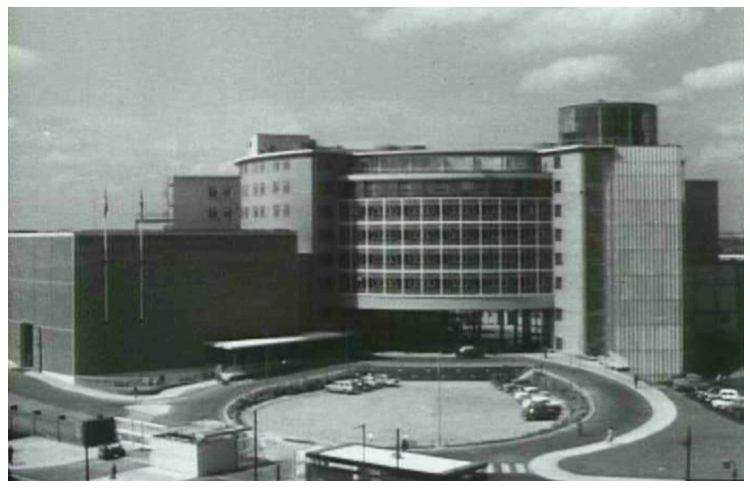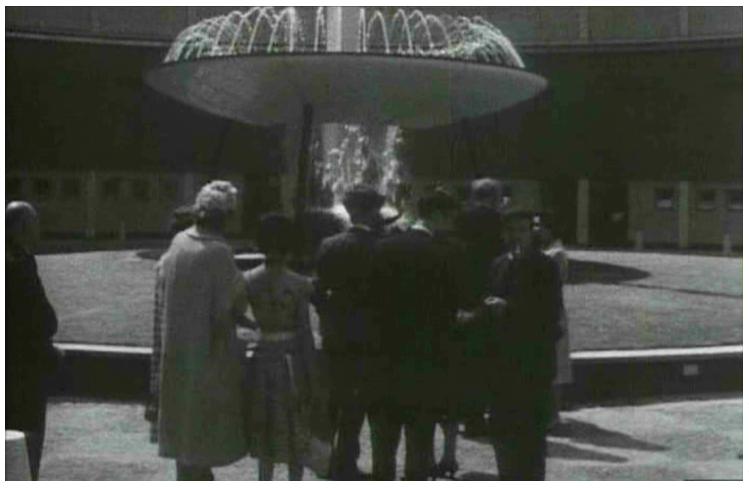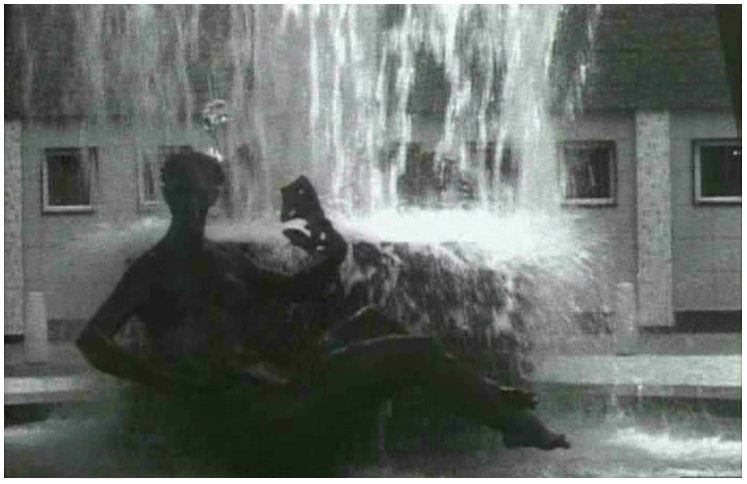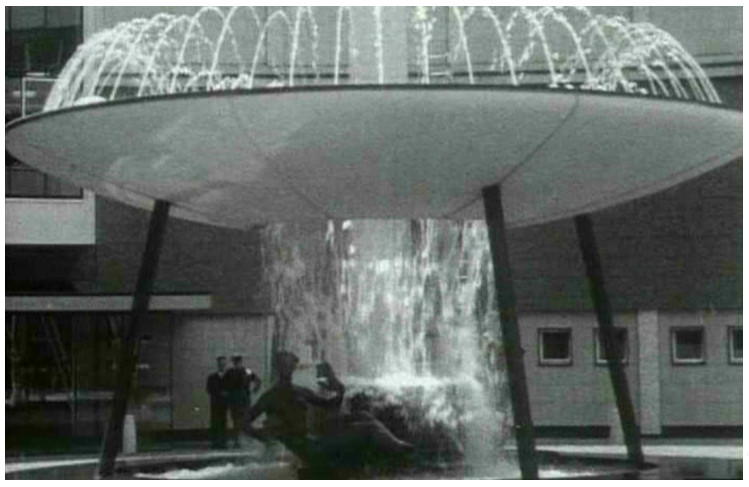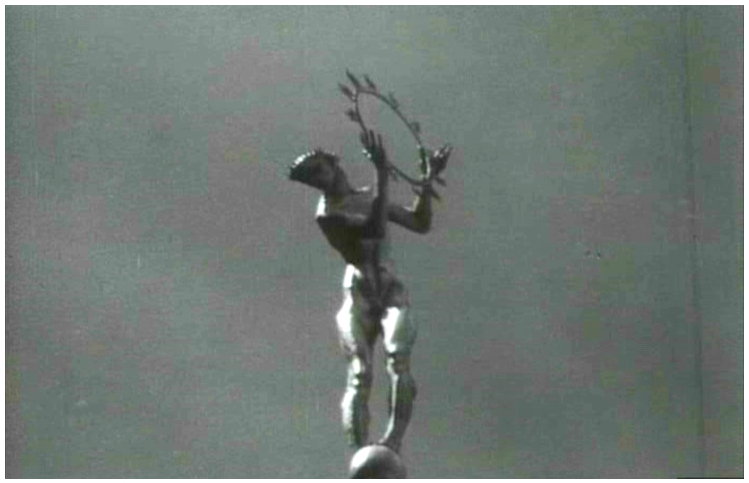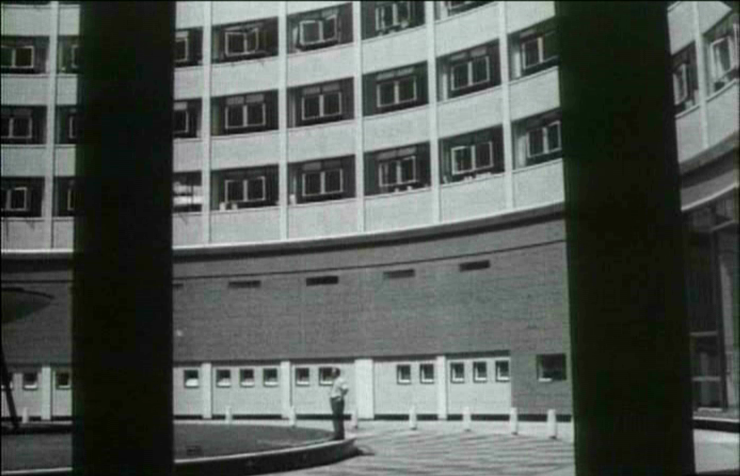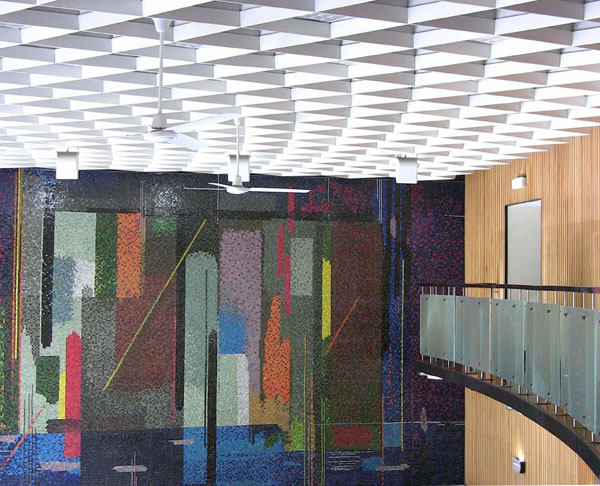From Roger Bunce
This year BBC Television Centre reached its 50th anniversary – a fact recently commemorated at the NFT.
Here is a brief personal tribute to the old place – when it was a young place – even before I started there. (Is it possible to feel nostalgia for a time before your own memories begin? I think it must be, but they may not have invented a word for it yet.)
The brand new TeleCentre – an iconic example of that futuristic, space-age design of the late 1950s and early 60s – an architectural style that falls somewhere between the Festival of Britain and Tracy Island. It’s the sort of place that Dan Dare or Jet Morgan might have made their headquarters. To me, the central circle will always look incomplete without Thunderbird Three coming up through the middle.
At the NFT, Esther Rantzen recalled meeting a senior Personnel Manager, while TV Centre was still under construction. He was a man who had formerly worked in the Colonial Service. He explained that the layout of the building, with its concentric corridors and ring-roads, was primarily intended to preserve the BBC’s internal caste system: to prevent the important people ever having to mingle with the riff-raff. The Artistic Types would enter the studios from the inner circle, via the smart Assembly Areas, while the dirty-handed Scene Shifters and others would come and go through the outer Ring-Road: a sort of “Tradesmen’s Entrance”. Their paths need never cross. Meanwhile, the Production Teams could look down their noses at both from the elevated isolation of their first-floor galleries. And the Producers had their own booths, with glass to protect them even from other members of their own team.
And you thought it was all about being a hyper-efficient programme-making factory?
I suspect this explanation says more about the attitudes of BBC Personnel, than about the workings of TV Centre.
Most of the pictures on this page were nicked from the 1985 VT Christmas tape. Does anyone know what film they originally came from? And does anyone have a copy?
Likewise, the accompanying anecdotes are entirely apocryphal. If anyone has more substantial details: dates, exact wording etc., please write in.
Some rare images of the central fountains, when they actually worked – something I never saw. They created a cylindrical waterfall, into a pool, between the symbolic sculptures of “Vision” and “Sound”. And that great, grey saucer looks just like the spaceship from “Forbidden Planet”.
Sadly, the fountains did not play for long. There were two problems.
Firstly, they leaked into the basement below, which contained the video tape editing suites. The area was so notorious for its damp, that it became known as “The Swamp”. The entire site had once been marshland. Decades later, VT moved out, and the Allocations Department of Studio Resources moved in. So – yes, – they filled the Swamp with Allocators (everybody groan).
Secondly, BBC Secretaries, working in inward-facing offices, found that the sight and sound of continually cascading water, played havoc with their bladder control.
Another thing which offended the more sensitive BBC Secretaries was T.B. Huxley-Jones’ statue of the god Helios. Its golden and very masculine anatomy lacked the traditional fig leaf. Frank Muir is said to have christened this spectacle “Cock d’Or”.
Two of my favourite tales of old TC involve Michael Bentine and his programme “It’s a Square World” (1960 – 1965). Bentine loved TV Centre so much that he liked to destroy it catastrophically at the end of each series (with the aid of the Special Effects department). On one occasion, with guest star Jack Hawkins in the studio, it was torpedoed and sunk by a German U-boat. On another, it was attacked by Red Indians. It was even blasted into space, enabling Bentine to look back at the world and say, “See, I always said it was square!” Patrick Moore then appeared in the “Sky at Night” studio and explained that the new object in the night sky was BBC Television Centre. “It is believed to contain life, but it is unlikely to be intelligent.”
Humourless BBC Management were so concerned by this disrespectful use of “their” building, that Michael Bentine received a stern memorandum, informing him that, “Under no circumstances must BBC Television Centre be used for purposes of entertainment.” It was a memo which he treasured for the rest of his career.
BBC staff came to accept that whenever surreal mayhem broke out around TV Centre, it probably had something to do with Michael Bentine. On one famous occasion this assumption proved incorrect. There was a real armed robbery at the BBC cashiers. As the robbers made their getaway, with stockings over their faces, a helpful security man opened the gate for them, greeting them with a cheery, “Good to see you, Mr. Bentine.”
In the early 1960s, BBC staff and talent were escaping to better-paid jobs with the new-fangled Independent Television. “It’s a Square World” satirised the situation by portraying TV Centre as a prisoner-of-war camp, with inmates tunnelling their way to ITV. This skit was re-shown at the NFT commemorations. It included a memorable shot of Dick Emery, dressed as a German airman, climbing into the cockpit of something that appeared to be an aircraft, until a wider shot revealed it to be a Messerschmitt bubble car!
Michael Bentine did escape to ITV in 1966. His reason for leaving was that BBC programme budgets were being cut. And you thought that sort of thing only started when the Accountants took control? No, they were making the same mistakes even back in 1966.
The mismanagement of the last couple of decades has done tragic damage to a once magnificent building – not just through neglect, but through ill-judged rebuilding. The new Reception area on Wood Lane is a vast, soulless eyesore, as are many of the open-plan offices which have disrupted the internal dynamics. The policy of privatisation has led to a lack of maintenance; the virtual abandonment of the Canteen and reduced the Assembly Areas to a pointless mess. Now, having wasted millions of pounds of Licence Payers’ money on vandalising a classic piece of design, they are planning to waste millions more by abandoning it completely: although even this idea seems to lack any clarity of purpose.
But there are still a few nooks and corners around TVC where one can glimpse the vision of the original architects.
This is probably my favourite view: the John Piper mosaic and honeycomb ceiling above the old Reception (now renamed Stage Door), seen from the first floor balcony. Anyone fancy a photographic safari around the old place, before it is completely ruined?


